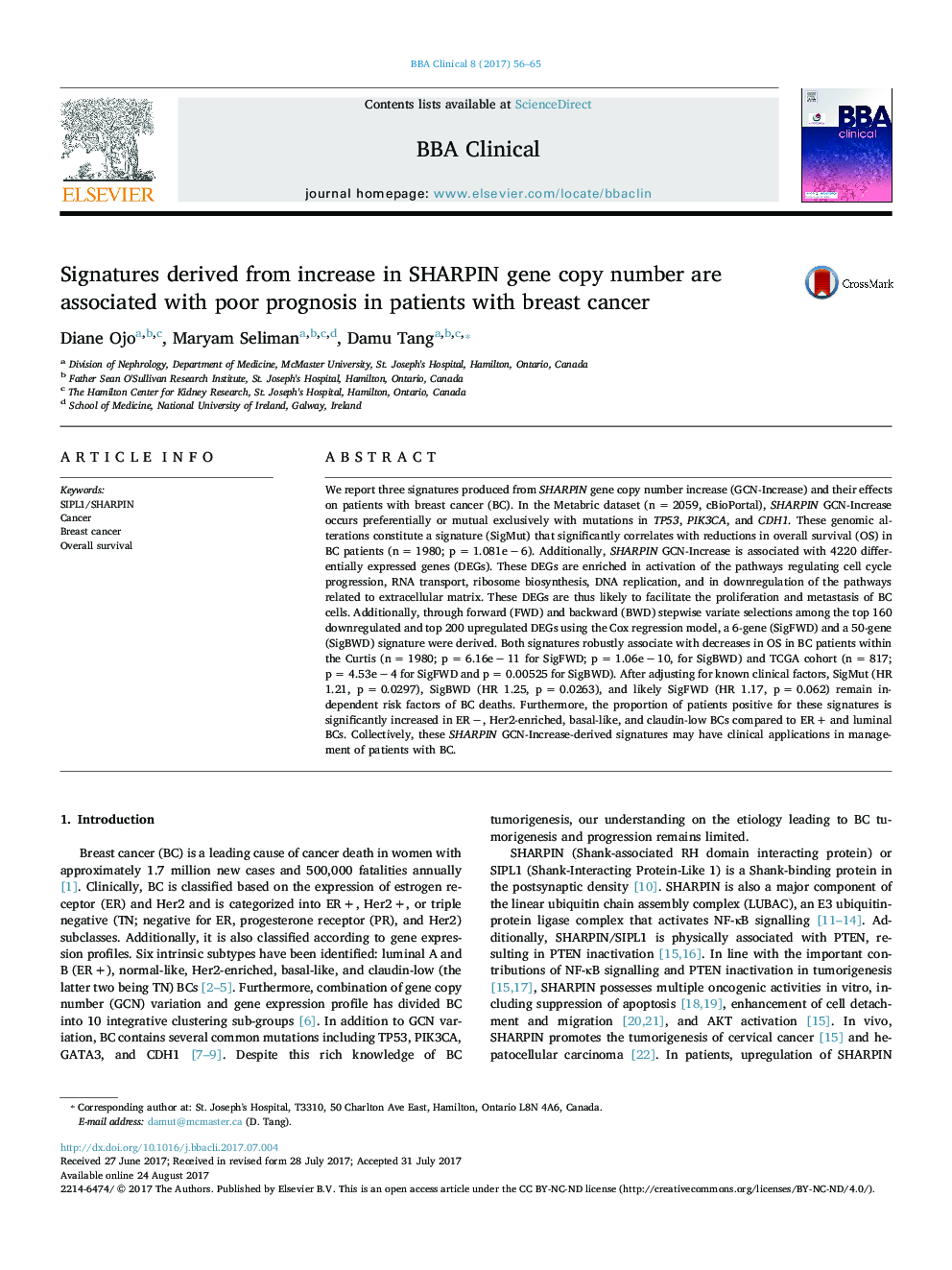| Article ID | Journal | Published Year | Pages | File Type |
|---|---|---|---|---|
| 5584286 | BBA Clinical | 2017 | 10 Pages |
â¢SHARPIN genomic increase correlates with poor prognosis in breast cancer patientsâ¢SHARPIN genomic increase associates with enrichment of mutations in TP53 and othersâ¢SHARPIN genomic increases occur along with many differentially expressed genes (DEGs)â¢These DEGs enhance breast cancer cell proliferation and reduces extracellular matrixâ¢Enriched mutations and DEGs strongly associate with reductions in overall survival
We report three signatures produced from SHARPIN gene copy number increase (GCN-Increase) and their effects on patients with breast cancer (BC). In the Metabric dataset (n = 2059, cBioPortal), SHARPIN GCN-Increase occurs preferentially or mutual exclusively with mutations in TP53, PIK3CA, and CDH1. These genomic alterations constitute a signature (SigMut) that significantly correlates with reductions in overall survival (OS) in BC patients (n = 1980; p = 1.081e â 6). Additionally, SHARPIN GCN-Increase is associated with 4220 differentially expressed genes (DEGs). These DEGs are enriched in activation of the pathways regulating cell cycle progression, RNA transport, ribosome biosynthesis, DNA replication, and in downregulation of the pathways related to extracellular matrix. These DEGs are thus likely to facilitate the proliferation and metastasis of BC cells. Additionally, through forward (FWD) and backward (BWD) stepwise variate selections among the top 160 downregulated and top 200 upregulated DEGs using the Cox regression model, a 6-gene (SigFWD) and a 50-gene (SigBWD) signature were derived. Both signatures robustly associate with decreases in OS in BC patients within the Curtis (n = 1980; p = 6.16e â 11 for SigFWD; p = 1.06e â 10, for SigBWD) and TCGA cohort (n = 817; p = 4.53e â 4 for SigFWD and p = 0.00525 for SigBWD). After adjusting for known clinical factors, SigMut (HR 1.21, p = 0.0297), SigBWD (HR 1.25, p = 0.0263), and likely SigFWD (HR 1.17, p = 0.062) remain independent risk factors of BC deaths. Furthermore, the proportion of patients positive for these signatures is significantly increased in ER â, Her2-enriched, basal-like, and claudin-low BCs compared to ER + and luminal BCs. Collectively, these SHARPIN GCN-Increase-derived signatures may have clinical applications in management of patients with BC.
